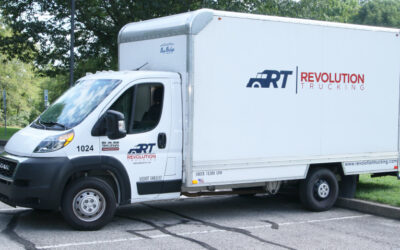Recently, a major buzz has grown around the City of Casa Grande, Arizona. This is a community that has leveraged the quality of life it promises as well as its many assets, including proximity, connectivity, and a friendly business climate, to become a beacon for investment and industrial development.
Located approximately halfway between Phoenix and Tucson along Arizona’s Golden Corridor, Casa Grande’s growing renown as a secure community for investment and a vibrant place to call home has put it on the radar—and everyone is taking notice.
Discover Casa Grande
For the over 60,000 residents and the nearly 15,000 snowbirds from Canada, the Midwest, and the East Coast who escape cold climes for the 300-plus days a year of Sonoran Desert sun, Casa Grande is home.
The community has long been a destination of choice for residents who are attracted to the idyllic weather, local culture, cost of living, and availability and affordability of land, but the same can now be said for business and industry on a far greater scale.
“From an affordability standpoint, it translates to not just land for industrial uses but the cost of housing,” says Richard Wilkie, Economic Development Director for Casa Grande. “If you move here, that’s more money in your pocket. You also spend much less time on the road than you would commuting in the Valley; even during the busiest times, you could be at work in 15 to 20 minutes, which means more time at home with the family or being involved with the community.”
These easy commutes are possible because of the optimal connectivity and infrastructure Casa Grande boasts. As a strategic hub, the community is directly served by Interstates Eight and Ten and the main line of the Union Pacific Railroad, and is within one hour of three major commercial airports. And, if that’s not enough, it is just over seven hours from the Port of Long Beach and three hours from two ports of entry into Mexico.
In addition to Interstates Eight and Ten, Wilkie notes that, “A proposed Interstate Eleven would connect Canada to Mexico through the United States, and that will either go through our community or immediately adjacent to the community to the west of us for enhanced connectivity.”
Being proximate and connected also enables Casa Grande to take advantage of growth in neighboring communities. The world’s largest chip manufacturer, TSMC, is investing $40 billion in North Phoenix, for instance. Casa Grande has managed to attract many of its suppliers who have been drawn to the availability and low cost of land: 2,400 flat, ready-to-develop acres zoned for industrial use. Access to a skilled workforce is also a significant perk.
Success breeds success
From an industrial standpoint, sustainability is an important consideration, one that the city of Casa Grande doesn’t take lightly. The community and its officials are very conscious that they are situated in a desert and water is a finite resource.
From Wilkie’s perspective, “We’re very conscious of the types of businesses that we’re actively recruiting. We’re looking for good, solid companies that are high-tech, high-skilled, pay well, have good benefits, and are good stewards of the environment, too. That helps diversify our economy, which strengthens its sustainability.”
Lucid Motors is a great example of those principles in action. The company established its first electric vehicle production facility in Casa Grande, sending large economic ripples through the community. The plant will undergo four phases of expansion, involving—in its most recently announced plans—tripling its 800,000-square-foot footprint to accommodate the production of additional models.
“Here’s the next generation of electric vehicle manufacturers that decided to locate their advanced manufacturing plant here in Casa Grande, the first green-build electric vehicle manufacturing plant in the country,” says Wilkie, who notes that while the company already employs 2,000 people, that will need to be increased significantly over the next three to five years.
“They’re still projecting to create over 6,200 jobs, so that’s a significant job creator for the community. That’s been one of the big drivers of new employment, and through that announcement, and throughout the last several years, we’ve gotten even more companies to realize that Casa Grande is a really good place to take a look at,” he says.
Lucid was certainly Casa Grande’s big break, but more than anything, what it did was draw attention to the community and exponentially grow the rate of investment. This attracted other companies, like Kohler—a global manufacturer of kitchen and bathroom products—which invested in a 1,000,000-square-foot factory that will result in more than 400 jobs.
More recently, NRS Logistics America Inc., a chemical and gas logistics service provider, announced that they had just bought land and held an official groundbreaking ceremony for their new operation in Casa Grande. The company closed on 40 acres that include four acres of rail right of way, proving that success is breeding success.
Wilkie is also sure to credit small businesses, which he referred to as the “lifeblood of our community,” and which remain a focus of economic development efforts along with the support for the industrial investments taking place.
“That’s what is leading to future growth; all of this is generating a surge in retail and commercial. We’ve added more than a dozen new restaurants over the last two years, a new auto park is planned with four to five new dealerships, and there is a planned dual-branded TownPlace Suites and Fairfield Inn & Suites by Marriott. Exciting things are going on and picking up speed,” he says.
A home-grown workforce
With this volume of economic activity, the workforce has to be a priority for Casa Grande, and most certainly, it is. Currently, the city can draw from around the region and state, tapping into the pipeline of skilled and educated residents in the area.
Casa Grande is also focused on developing its own talent. The city is working with the local school districts, Central Arizona College, Pinal County, and the State of Arizona, through entities like Arizona at Work, to provide training and job placement services and see that workforce needs, both current and future, are met.
Programs like Drive48 are examples of the city’s collaboration in action where government, industry, and academia work together to support and grow Arizona’s workforce through training efforts and the establishment of a state-of-the-art training facility. Likewise, Casa Grande’s economic development officials and city leadership are helping to bridge the gap between education and industry to ensure that the development of curricula directly supports the needs of the local economy.
Wilkie highlights several career technical education (CTE) opportunities in automation, robotics, automotive, and other skills development that align with business needs, and notes that, “Growing our own is an important part of the workforce equation.”
The work is never done
To ensure that the growth taking place is sustainable, Casa Grande maintains a Master General Plan to guide its investment in infrastructure to support the growth that is projected to last deep into the 2030s and beyond. This includes conservation measures to reduce water usage by fifteen percent over the next ten years, as well as major infrastructure expansions.
“We currently have a twelve million gallon per day processing capacity at our wastewater treatment facility,” Wilkie shares. “We’re currently using about six and a half million of it and the city has already committed another $30 to $40 million over the next two years to expand that facility. Part of our expansion of the wastewater treatment and collections facility is that we’re incorporating an effluent line that would be able to supply A+ treated effluent back into the industrial corridor. So the manufacturers that don’t really need potable water for their operations can use effluent—reducing, retaining, and protecting the water that could be used in other ways.”
Casa Grande engages with Arizona Water to promote better water conservation efforts community-wide, continuing to be good stewards of a finite resource that’s necessary for residents and the economy alike to function.
It should come with some relief that none of this will impact Casa Grande’s ability to grow, whether industrially or in the provision of residential sites. Despite the state putting a cap on the number of new certificates of assured water supply for new single-family homes, Casa Grande has over 17,000 lots already certified. This is truly a win, given the number of new jobs that will be added to the region in the coming years. With the strength of diversity in its economy, the strong focus on investments that make sense, and a quality of life that has long attracted people from far and wide to the community, Casa Grande is on a trajectory for success in the long haul.
Wilkie is quick to point out that it took many hands to make this a reality. “We have a great City Council and City Management that have continued to support our efforts to attract and retain these companies, and an amazing staff, especially in our planning and development and public works department, who play such a vital role in our success,” he says. “Economic development is a team effort that goes beyond the city and includes our partners like Central Arizona College, ARIZONA@WORK, Pinal County, our utilities (APS, AZ Water, Southwest Gas), landowners, and of course, industry.”
For Wilkie and his team, the effort has paid off: “We’re no longer an unknown,” he says. “We’ve finally been discovered and now we’ve built the reputation we want amongst these types of industries. Casa Grande is worth taking a look at!”













